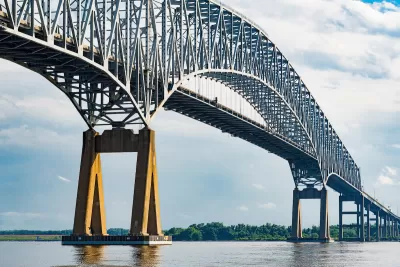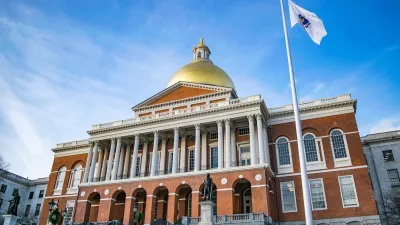A civil engineer outlines the federal regulations and mechanisms aimed at preventing the damage and loss of life seen in the Francis Scott Key Bridge collapse.

In an interview with Governing, civil engineer Sherif El-Tawil explains how bridges can be built to better withstand ship collisions like the one that damaged the Francis Scott Key Bridge in Baltimore on March 26.
El-Tawil explains that a similar collision in 1980 prompted new federal regulations that took effect in the early 1990s — three years after the Baltimore bridge was built. “What those specifications say is that you either design the bridge for the impact force that a ship can deliver or you must protect the bridge against that impact force. So you must have a protective system.”
El-Tawil notes that such ship collisions are extremely rare, which could explain the lack of expensive protective mechanisms on the Key Bridge. Still, the loss of the bridge will have a major impact on shipping and the national supply chain. “The loss of this bridge, beyond the tragic loss of life, is going to be felt for many months if not years. It’s not a straightforward process to replace a bridge of this magnitude, of this span distance. It’s something that will require a lot of planning and a lot of resources to come back again to where we were before.”
FULL STORY: How Bridges Can Be Protected From Ship Collisions

Study: Maui’s Plan to Convert Vacation Rentals to Long-Term Housing Could Cause Nearly $1 Billion Economic Loss
The plan would reduce visitor accommodation by 25,% resulting in 1,900 jobs lost.

North Texas Transit Leaders Tout Benefits of TOD for Growing Region
At a summit focused on transit-oriented development, policymakers discussed how North Texas’ expanded light rail system can serve as a tool for economic growth.

Why Should We Subsidize Public Transportation?
Many public transit agencies face financial stress due to rising costs, declining fare revenue, and declining subsidies. Transit advocates must provide a strong business case for increasing public transit funding.

How to Make US Trains Faster
Changes to boarding platforms and a switch to electric trains could improve U.S. passenger rail service without the added cost of high-speed rail.

Columbia’s Revitalized ‘Loop’ Is a Hub for Local Entrepreneurs
A focus on small businesses is helping a commercial corridor in Columbia, Missouri thrive.

Invasive Insect Threatens Minnesota’s Ash Forests
The Emerald Ash Borer is a rapidly spreading invasive pest threatening Minnesota’s ash trees, and homeowners are encouraged to plant diverse replacement species, avoid moving ash firewood, and monitor for signs of infestation.
Urban Design for Planners 1: Software Tools
This six-course series explores essential urban design concepts using open source software and equips planners with the tools they need to participate fully in the urban design process.
Planning for Universal Design
Learn the tools for implementing Universal Design in planning regulations.
City of Santa Clarita
Ascent Environmental
Institute for Housing and Urban Development Studies (IHS)
City of Grandview
Harvard GSD Executive Education
Toledo-Lucas County Plan Commissions
Salt Lake City
NYU Wagner Graduate School of Public Service





























